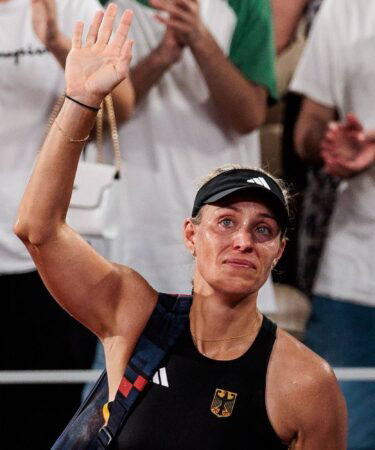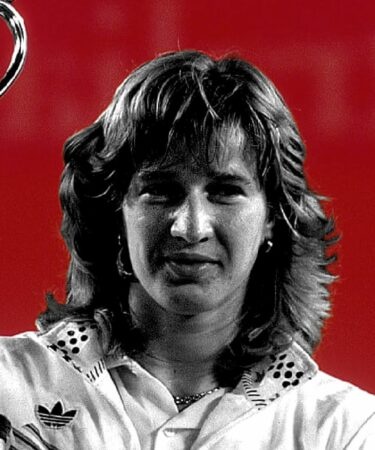July 9, 2016: The day Serena Williams became the oldest woman to win Wimbledon in the Open Era
Every day, Tennis Majors takes you back in time to relive a tennis event which happened on this specific day. On this day in 2016, Serena Williams won her seventh Wimbledon singles title and equalled the Open Era record for most Grand Slam singles titles won
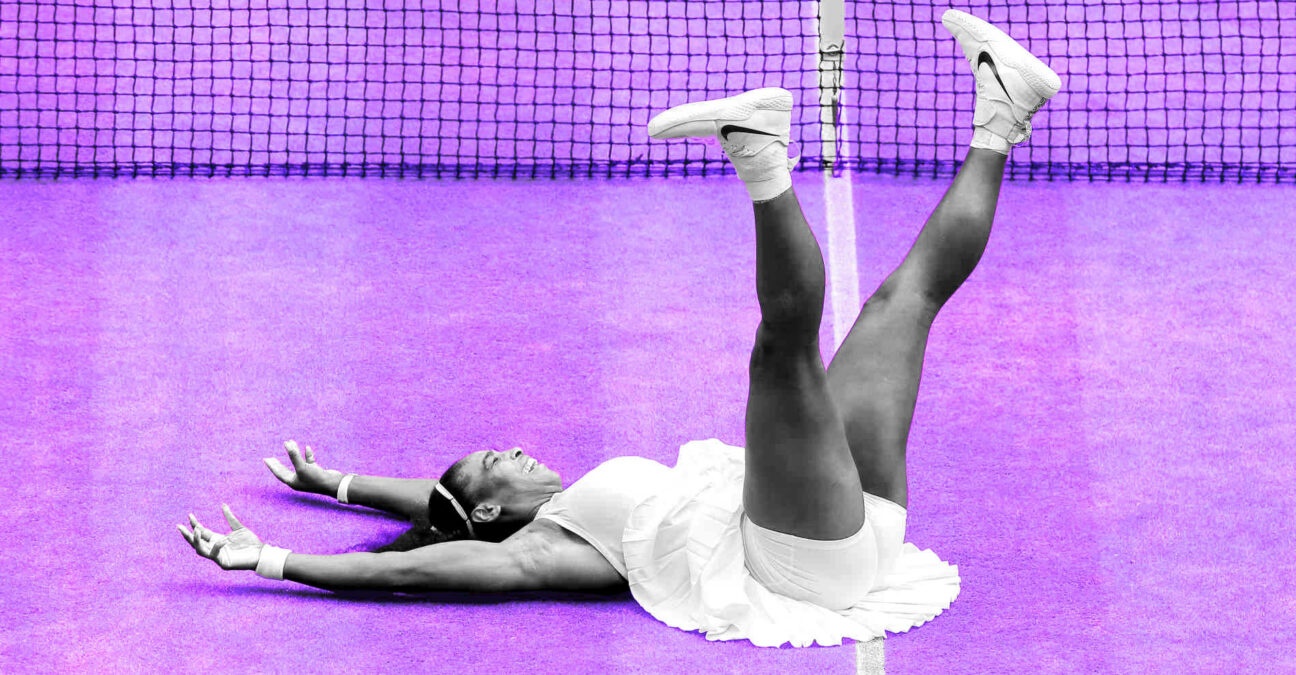 Serena Williams à Wimbledon en 2016, OTD
Serena Williams à Wimbledon en 2016, OTD
What exactly happened on that day?
On this day, July 9, in 2016, Serena Williams became the oldest female player in the Open era to triumph at Wimbledon, defeating Angelique Kerber in the final (7-5, 6-3). At the age of 34 years and nine months, the American, world No. 1 at the time, achieved another feat that day, equalling Steffi Graf’s Open Era record of 22 Grand Slam titles.
The players involved: Serena Williams and Angelique Kerber
- Serena Williams: the 21-time Grand Slam winner chasing history
Serena Williams, born in 1981, is the youngest of the Williams family. Her older sister Venus, at the start of her career in 1997, had declared that her main rival for the world No. 1 ranking would be her younger sister Serena. At the time, the tennis experts did not know if she was joking or just being provocative. They soon discovered how serious Venus was. Serena’s breakthrough year had been 1999. That year, in September, to the surprise of many, she claimed her first Grand Slam title before her sister Venus, beating Martina Hingis in the final (6-3, 7-6).
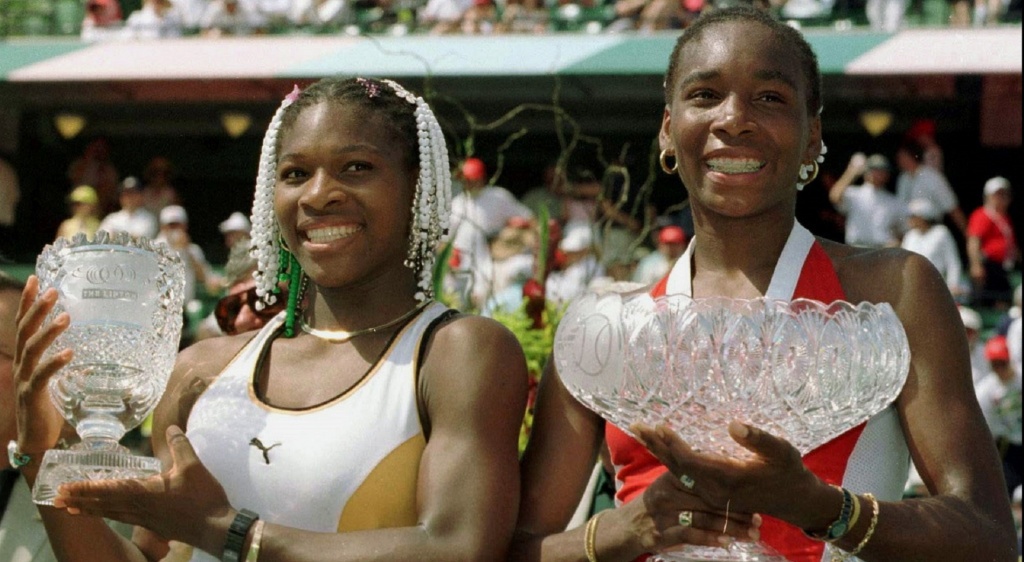
She also won the doubles event, partnering Venus, and by the end of the year, she was ranked No. 4. In 2001, Serena reached the US Open final, falling to her sister in the first Grand Slam final final contested by two sisters during the Open Era.
Between Roland-Garros 2002 and the Australian Open in 2003, Venus’ little sister took her career into a new dimension, accomplishing an extraordinary feat which was known as the “Serena Slam”: she claimed four Grand Slam tournaments in succession, beating her sister Venus each time in the final.
Between 2004 and 2006, Serena was less focused on her tennis career and, despite another Grand Slam triumph at the 2005 Australian Open, she even took a break from the tour in 2006. She came back stronger than ever in 2007 and, over the following years, won numerous major titles. In 2015, after having won the first three majors of the year, she came two matches short of a calendar Grand Slam, when she lost to Roberta Vinci in the US Open semi-final (2-6, 6-4, 6-4). In July 2016, after having finished runner-up at both the Australian Open and Roland-Garros, Serena was still the world No. 1, holding 21 major titles, aiming at Steffi Graf’s Open era record of 22 Grand Slam titles.
- Angelique Kerber: the first German Grand Slam winner since 1999
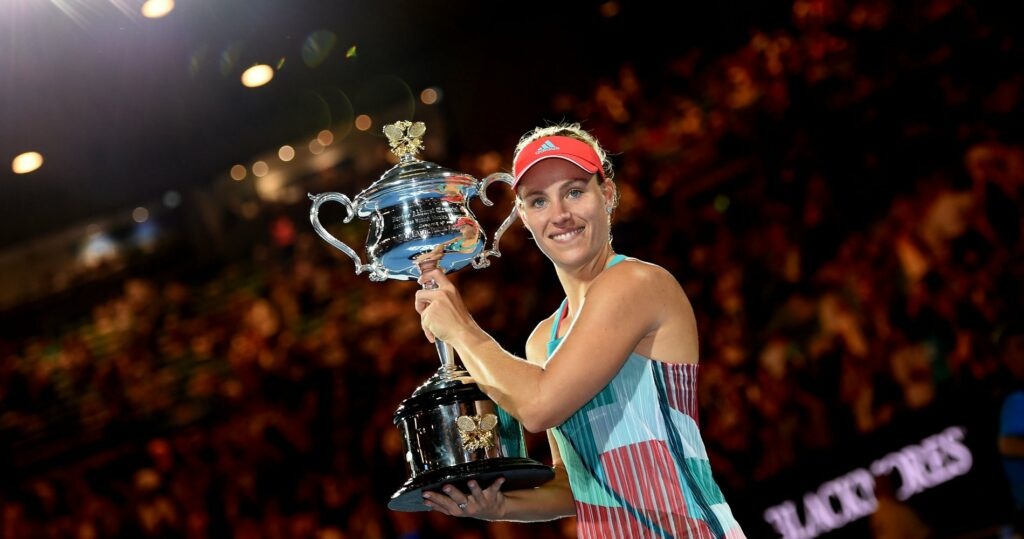
Angelique Kerber, from Germany, turned pro in 2003, at the age of 14, but it wasn’t before 2010 that she firmly settled in the top 100. In 2011, in her 15th appearance in a Grand Slam main draw, the left-hander obtained her first remarkable result, reaching the US Open semi-final, ranked No. 92 in the world (lost to Samantha Stosur, 6-3, 2-6, 6-2).
The following year, Kerber claimed her first WTA title at Paris Coubertin (defeating Marion Bartoli in the final, 7-6, 5-7, 6-3), soon followed by a second in Copenhagen. Reaching the quarter-finals at Roland-Garros and the semi-finals at Wimbledon, she finished the year as world No. 5. In the three following seasons, the Polish-speaking German remained a solid top 10 player, but failed to achieve significant results in major tournaments. However, at the start of 2016, she took her career to the next level, by winning the Australian Open. In the first round, Kerber saved a match point against world No. 64, Misaki Doi and then went all the way to beat defending champion and world No. 1 Serena Williams in the final.
The win also made her the first German to win a Grand Slam singles title since 1999. Defeated in the first round at Roland-Garros, Kerber arrived at Wimbledon as the world No. 4.
The place: Wimbledon, south-west London
Wimbledon is the oldest and the most prestigious tennis tournament in the world. Held at the All England Lawn Tennis and Croquet Club since 1877, it moved to its current location in 1922, the same year when the Centre Court was built. Considered by many as the most intimidating court in the world, with its famous Rudyard Kipling quote above the entrance (“If you can meet with triumph and disaster and treat those two impostors just the same”), the Centre Court had seen the best players of all time competing for the title.
After the US Open switched to clay and then hard court in the 1970s, and after the Australian Open switched to hard court in 1988, Wimbledon remained the only Grand Slam tournament to be played on grass, a surface that is usually more suitable for serve-and-volley players. Not only did Wimbledon keep its surface, but it also maintained old-fashioned traditions such as its all-white dress code and the fact that the defending champion was always the first to play on the Centre Court.
The facts: Serena Williams’ lethal serve helps her win seventh Wimbledon title
Despite being world No. 1 and holding 21 Grand Slam titles, Serena Williams had a lot to prove to herself at Wimbledon in 2016. 10 months earlier, at the 2015 US Open, she seemed to be cruising to the coveted calendar Grand Slam. However, that was not meant to be as she was defeated in the semi-finals by world No. 43 Roberta Vinci. Since then, she had lost two Grand Slam finals, at the Australian Open and at Roland-Garros. Most of the players would have been happy with these results, but not Serena. She needed to win, and this was her only goal when she stormed through the Wimbledon draw, dropping only one set in her six first matches.
In the final, she faced Kerber, the same player who had beaten her in the Australian Open final. The German had not obtained outstanding results since her triumph in Melbourne, but in London, she made her way to the final without dropping a single set.
Once again, Kerber proved to be a real challenge for Williams, retrieving every ball to push the world No. 1 to her limits. However, Serena’s greatest weapon, her legendary serve, was particularly sharp on that day, which kept her out of danger. She did not face a single break point in the first set, and as she led 6-5, she took every opportunity to come forward and broke Kerber to seal the set.
“I played two points a little bit too short, and she was there, and she goes for it,” Kerber said later, according to The New York Times.
The German kept fighting in the second set, but once again, Williams’ serve was too big of a challenge for her. When the German finally obtained her first break point, at 3-3, the American responded with two aces. “It was her first break point, and I wasn’t going to let it go on the very first one, at least,” Williams said. “I wanted to hit an ace.”
Her confidence shaken by this demonstration of power, Kerber lost her serve in the following game, allowing Williams to serve for the match. She won that last game to love, with three serves that never came back and a forehand winner to seal the deal. Williams could lay on her back on the Centre Court grass and let the moment soak in. Thanks to this seventh triumph at Wimbledon, she had just equaled Steffi Graf’s Open era record of 22 Grand Slam singles titles. 14 years after her first title at the All England Club, she had also become the oldest female player in the Open era to lift the Venus Rosewater Dish. Her new challenge was now Margaret Court’s all-time record of 24 titles.
What next?
A few hours later, Serena would be back on court with sister Venus to win the doubles event, their 14th Grand Slam doubles title together (they never lost a Grand Slam final together). Defeated in the US Open semi-finals by Karolina Pliskova, Williams would add a 23rd Grand Slam to her list of achievements at the 2017 Australian Open, before taking time away from the tour to give birth to her first child. Back in the game in 2018, she would reach four more Major finals but she would still be chasing after a 24th Slam when she retired in 2022.
Angelique Kerber would claim a second Grand Slam title in 2016, defeating Pliskova in the US Open final (6-3, 4-6, 6-4), which allowed her to reach world No. 1 ranking for the first time. In total, Kerber would remain No 1 for 34 weeks, but she would have a disappointing 2017 season, in which she would finish as world No 21. However, in 2018, she would climb back to the top, taking her revenge upon Serena in the Wimbledon final to claim a third major title and climb back as high as No. 2 in the rankings.



